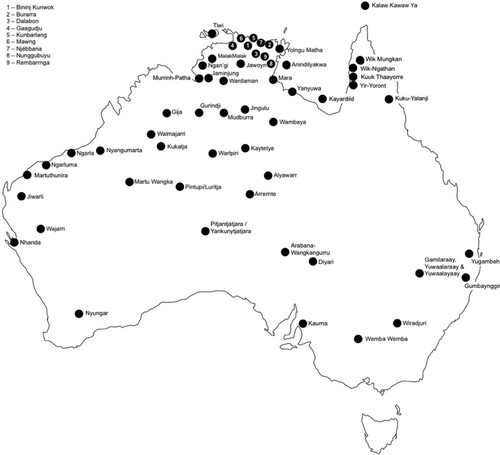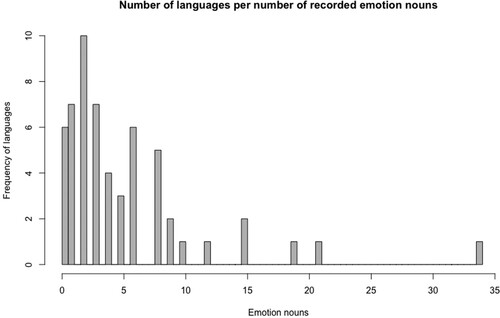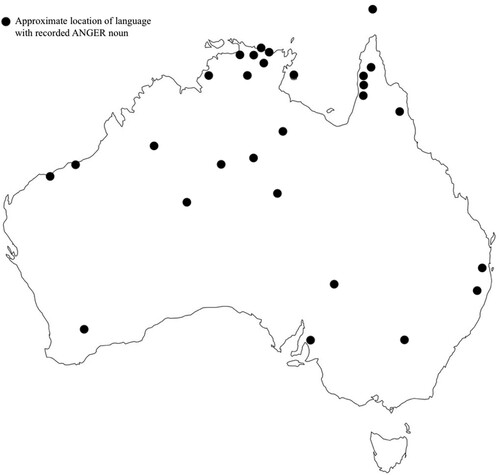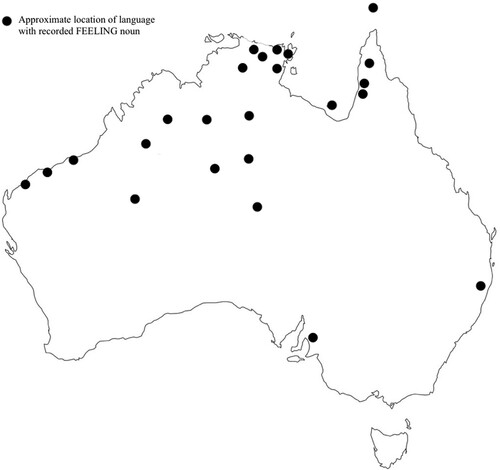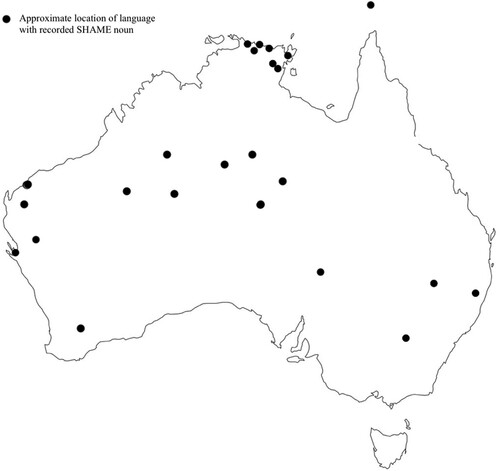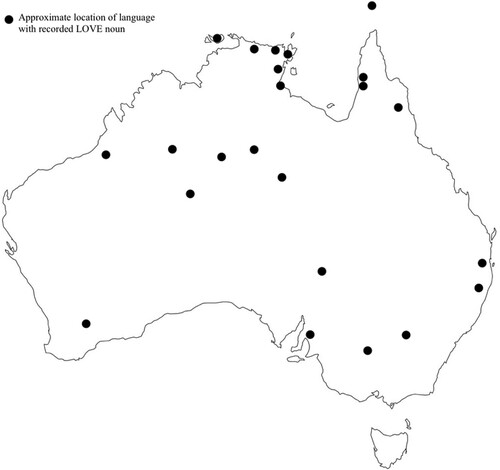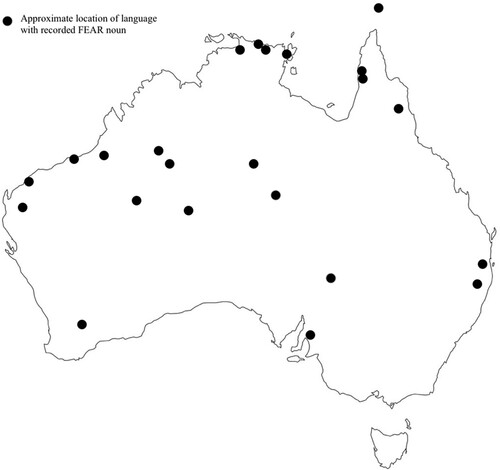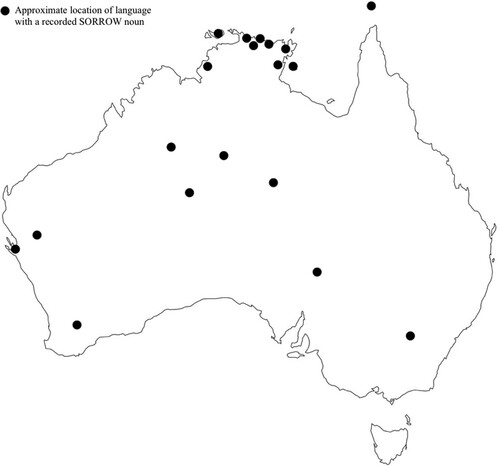Figures & data
Table 1 Number of documented emotion nouns by cluster
Table 2 Reflexes of proto-Pama-Nyungan *kuli in the data
Table 3 Examples of lexical entries for feeling nouns
Table 4 Shared roots for shame nouns
Table 5 Shared roots for fear nouns
Table 6 Examples of lexical entries for sorrow nouns
Table 7 Senses colexified in anger nouns (n = 46)
Table 8 Senses colexified in feeling nouns (n = 39)
Table 9 Senses colexified in shame nouns (n = 29)
Table 10 Senses colexified in love nouns (n = 50)
Table 11 Senses colexified in fear nouns (n = 37)
Table 12 Senses colexified in sorrow nouns (n = 30)
Table 13 Number of colexifications by noun cluster paths.
Data availability statement
The data that support the findings of this study are openly available from referenced resources in the public domain, listed in Appendix A, except for assorted data for Jaminjung, Ngarla, Nyangumarta and Nyungar (which were shared from private sources). This article was adapted and developed from Yacopetti’s Honours thesis.

